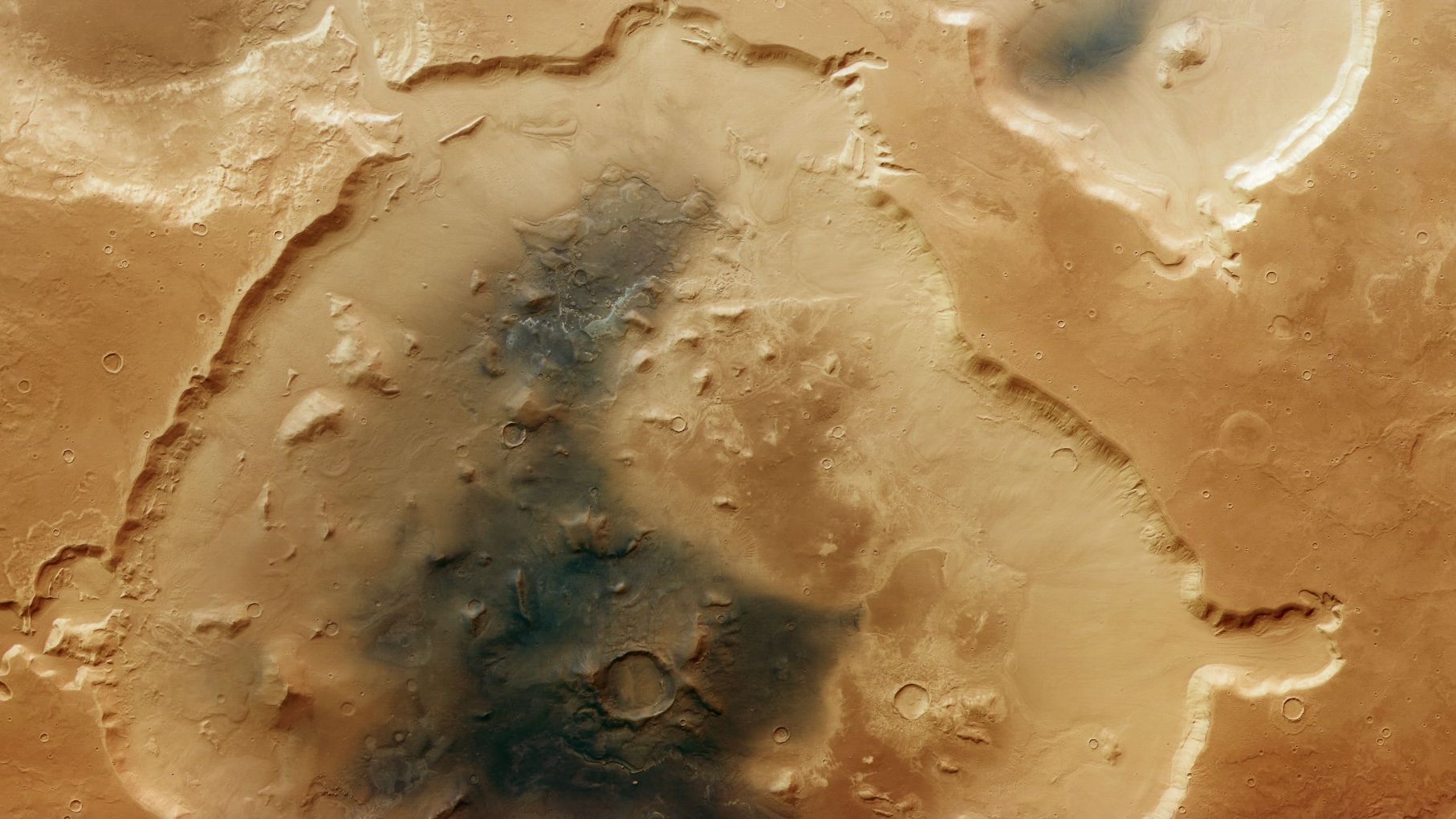Follow us on Google News (click on ☆)
Located in a transition zone between the southern highlands and northern lowlands of Mars, Deuteronilus Cavus bears witness to a unique geological history. Its diameter of 75 miles (120 kilometers) results from an impact about 4 billion years ago, followed by erosion by water and ice. Scientists see it as a window into Mars' dynamic past.

The Deuteronilus Cavus crater, spanning 75 miles (120 kilometers), shows signs of erosion by water and ice.
Credit: ESA/DLR/FU Berlin
The presence of clay minerals in the crater suggests past interactions between water and volcanic materials. These conditions could have been favorable for life, offering a glimpse into ancient habitable environments on Mars. The observed channels and ridges support this hypothesis.
Successive glaciations have also left their mark on Deuteronilus Cavus. Moving glaciers carved grooves and transported rocky debris. These processes helped shape the crater's current landscape, revealing past climate cycles.
The crater's interior features a variety of geological formations, including mesas and plains covered in volcanic ash. These elements, combined with compression ridges, tell the story of lava flows that once covered the region.
Scientists use these clues to reconstruct Mars' climatic and geological evolution. Deuteronilus Cavus appears as an open book on the processes that shaped the Martian surface over billions of years.
What role does ice play in shaping Martian landscapes?
Ice has been a major player in sculpting Martian landscapes. During ice ages, it carved valleys and transported materials, permanently altering the planet's surface. Traces of these activities are still visible today.
Martian glaciers, often covered in dust, moved slowly under gravity's influence. This movement carried rocks, digging grooves into the ground, like those observed around Deuteronilus Cavus. These formations testify to past glacial activity.
Ice also influences soil stability. When it melts, it can create channels and gullies. These processes are similar to those observed on Earth in polar or mountainous regions.
Finally, the suspected presence of subsurface ice is a potential resource for future crewed missions. Understanding its distribution and behavior is thus a scientific and practical challenge for Mars exploration.